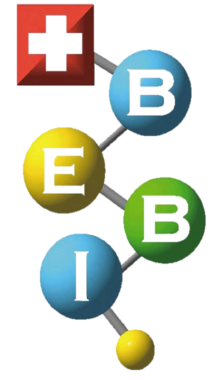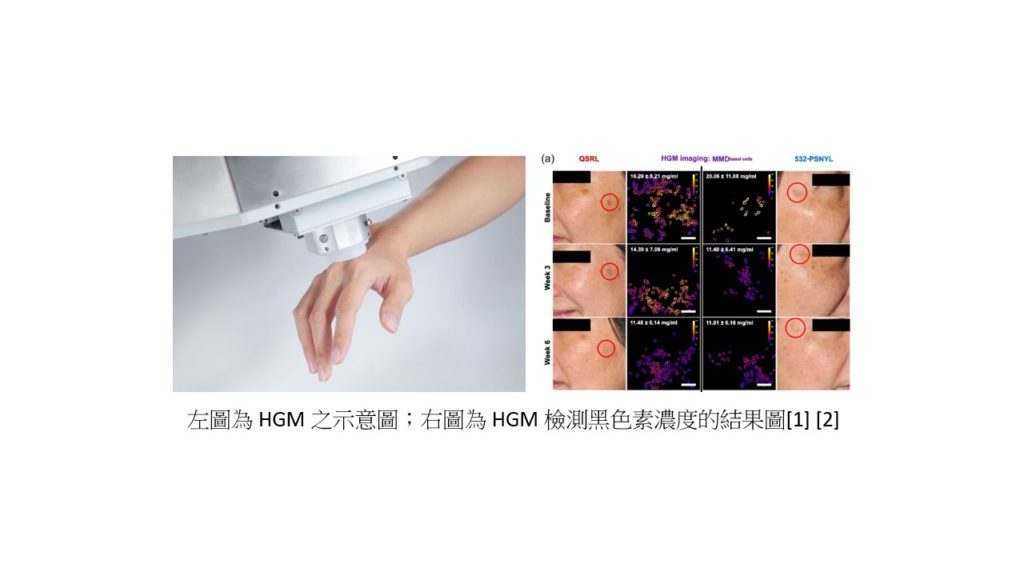研究主題:倍頻顯示術在生醫檢測上之應用
撰寫:學生陳冠彬
倍頻顯示技術(Harmonic generation microscopy, HGM)為本所孫啟光老師實驗室所開發的專利技術,利用對人體皮膚吸收最少且散射最低的雷射光源,可以達到對人體皮膚傷害最小、穿透度高以及解析度最高的成像效果。透過這項技術,人類在皮膚病變的診斷及治療效能可以更為提升,另外孫老師的團隊也長期與台大醫院合作進行各項臨床研究,以下介紹孫老師在今年11月發表在歐洲的皮膚病及性病理學的期刊(Journal of the european academy of dermatology and venereology ,JEADV) [1]。
黑斑是年長者容易出現的皮膚病變,又俗稱老人斑,隨著年齡的增長人體的新陳代謝會開始下滑,當體內氧化的脂肪在無法代謝掉的情況下就容易在皮下組織沉積,從而形成斑點。目前在醫學上利用雷射治療來移除老人斑是相當常規的一種醫療手段,而最常使用的兩種雷射光源分別為Q開關紅寶石雷射(quality switched ruby laser, QSRL)以及倍頻皮秒銣雅克雷射(frequency doubled picosecond Nd:YAG laser,PSNYL),以上兩種都已經被實驗證實了對黑斑移除的有效性,然而並沒有研究利用兩種雷射在同一病患的兩邊臉上做除斑比較,孫老師的團隊及利用了HGM作為檢測工具來進行比較。
在25位臨床實驗的結果中,兩種雷射治療在除斑的表現上都有顯著的成效,比起原先的斑點,QSRL有68%的淡斑效果,而PSNYL則有75%的淡斑效果,在HGM的觀察下,兩種雷射的除斑結果在三周後以及六周後的再次檢測中,黑色素濃度都有到達一般正常皮膚的等級。儘管如此,在第六周的HGM追蹤檢測中發現PSNYL的治療組,比起QSRL有更低的黑色素細胞累積。
最後,在這份研究中發現越高的黑色素沉積能夠將會有更好的雷射治療結果,藉由HGM的輔助下,未來在皮膚病以及黑色素的研究上可以幫助醫生做出更精準的診斷以及治療預測。
Harmonic generation microscopy (HGM) is a valuable patent technology of Dr.Sun. HGM can reach the highest penetration and resolution and the lowest skin damage by using a specific laser source. Therefore, HGM is a powerful tech for skin disease diagnosis. The following is an introduction to the Journal of the European academy of dermatology and venereology (JEADV) that Dr. Sun published in November.
Solar lentigines are skin lesions prone to appear in the elderly. As the body ages, the human body’s metabolism will begin to decline. When we cannot metabolize the oxidized fat in the body, it is easy to deposit in the subcutaneous tissue, thus forming spots. Using laser therapy to remove solar lentigines is quite a routine medical method. Quality-switched ruby laser (QSRL) and frequency-doubled picosecond Nd: YAG laser (PSNYL) is the most commonly used laser light sources. The above two have been experimentally confirmed to be effective in removing solar lentigines, but there is no research on using two kinds of lasers on both sides of the same patient. For spot removal comparison on the face, Dr. Sun’s team used HGM as a detection tool comparison.
In the results of 25 clinical trials, both laser treatments significantly affect the performance of spot removal. QSRL has a 68% lightning effect compared with the original spots, while PSNYL has a 75% lightning effect. As for development, under the observation of HGM, the speckle removal results of the two lasers reached average skin level in three weeks and six weeks later. Nevertheless, the PSNYL treatment group had lower melanocyte accumulation than QSRL in the HGM follow-up at week 6.
Finally, this study found that the higher the melanin deposition, the better the results of laser treatment. With the help of HGM, future research on skin diseases and melanin can help doctors make more accurate diagnoses and treatment predictions.
[1] P.-J. Wu, S.-T. Chen, Y.-S. Sheen, C.-K. Sun, and Y.-H. Liao, “A longitudinal comparative study by in vivo harmonic generation microscopy: Q-switched ruby laser versus picosecond 532-nm Nd: YAG laser for the treatment of solar lentigines,” JEADV Clinical Practice, vol. 1, no. 4, pp. 372-382, 2022, DOI: https://doi.org/10.1002/jvc2.57.
[2] 國立臺灣大學 超快光電實驗室 (ntu.edu.tw)

